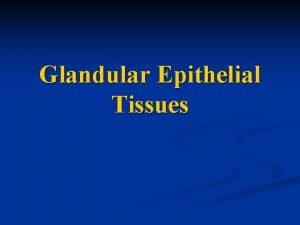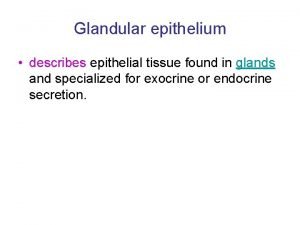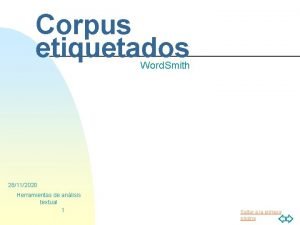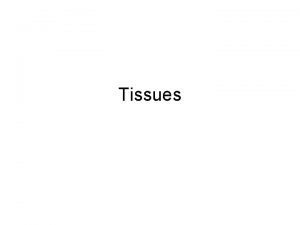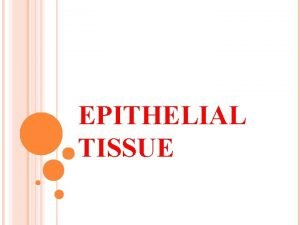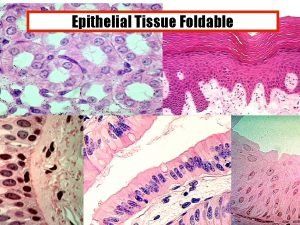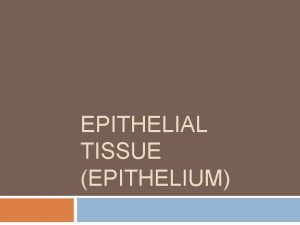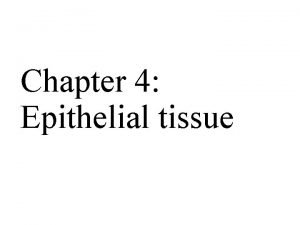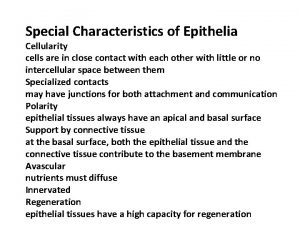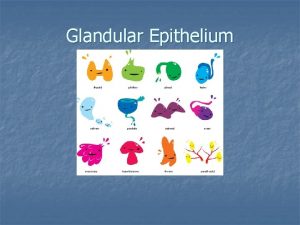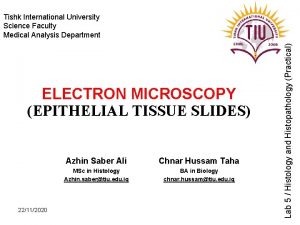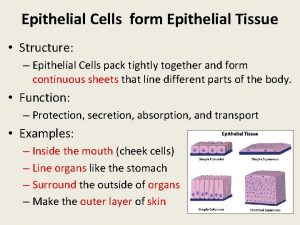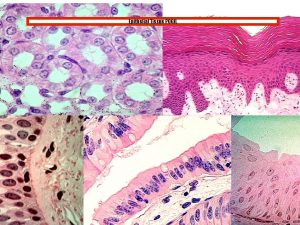FROZEN SECTION GLANDULAR EPITHELIAL TISSUE SLIDES 28112020 Azhin











- Slides: 11

FROZEN SECTION (GLANDULAR EPITHELIAL TISSUE SLIDES) 28/11/2020 Azhin Saber Ali Chnar Hussam Taha MSc in Histology Azhin. saber@tiu. edu. iq BA in Biology chnar. hussam@tiu. edu. iq Lab 6 / Histology and Histopathology (Practical) Tishk International University Science Faculty Medical Analysis Department

Frozen section • The Principle of Frozen Section; The rapid freezing of the tissue sample converts the water into ice. The firm ice within the tissue acts as embedding media to cut the tissue. Lowering the temperature makes the tissue more firm, whereas increasing temperature makes the tissue softer. • Preparation of frozen section slides is a complex technical process requiring development of refined technical skills, as well as an understanding of the histology, microanatomy and pathology of the tissues being examined.

PURPOSES OF FROZEN SECTION ü Quick diagnosis (intra-operative consultation ) ü Study the margins of cancer (To know the extent of the lesion) ü To do enzyme immunohistochemistry ü To stain lipid and certain carbohydrate in the tissue ü Some molecular procedures

Cryostat Sectioning Cryostat processing: (a) mould is covered with OCT, (b) the tissue is now put on the block, (c) OCT is flooded over the tissue, (d) the tissue now is put in the cooling chamber, (e) the brush guides the tip of the tissue, (f) the tissue section is gently spread over the antiroll plate and later picked up by touching a glass slide.

Fixation: The tissue should be immediately fixed in methanol for 1 min or 95% ethanol for few seconds. • Embedding media Optimum Cooling temperature (OCT) compounds • The OCT is made of water-soluble glycols and resin. • Freezing substance (cold spray) – Carbon Dioxide gas is most commonly used with freezing microtome. This gives good results. – Liquid Nitrogen.

Cryostat is specialized type of microtome, it is usually used in a process called frozen section histology. The cryostat is placed in a freezer. The cryostat is usually a stationary upright freezer, with an external wheel for rotating the microtome. The temperature can be varied, depending on the tissue being cut - usually from (0 to – 35) Usual histology slides are mounted with a thickness of about 7 micrometres.

Hematoxylin & Eosin (H&E): • • • Rinse the slide in tap water. Put in haematoxylin for 1 min. Rinse in tap water for 10 s. Dip in eosin for 20 s. Rapidly rinse in tap water. 95% ethanol for 10 s. 100% ethanol for 10 s. Dip in xylene for 20 s. Mount by DPX.

Disadvantages • • Morphology is distorted Cellular details are not well seen, Staining is not very good Some specials stains cannot be performed.

Microscopic examination of glandular epithelial tissue


 Epitelio glandular holocrino
Epitelio glandular holocrino Glandular epithelial cell
Glandular epithelial cell 28112020
28112020 Insufficient glandular tissue pictures
Insufficient glandular tissue pictures Layers of epithelial tissue
Layers of epithelial tissue Simple squamous epithelium
Simple squamous epithelium Basal lamina and reticular lamina
Basal lamina and reticular lamina Introduction to epithelial tissue pogil answer key
Introduction to epithelial tissue pogil answer key Epithelial tissue
Epithelial tissue Layers of epithelial tissue
Layers of epithelial tissue Kidney epithelial tissue
Kidney epithelial tissue Passageway
Passageway
